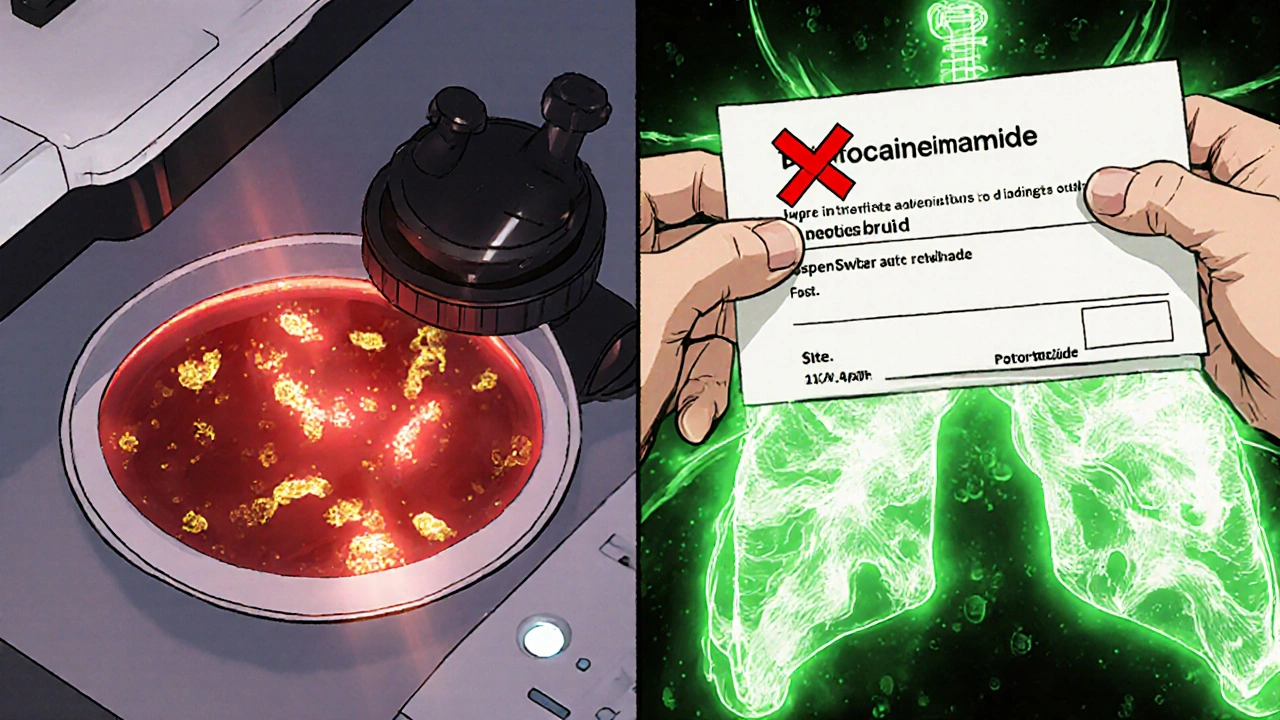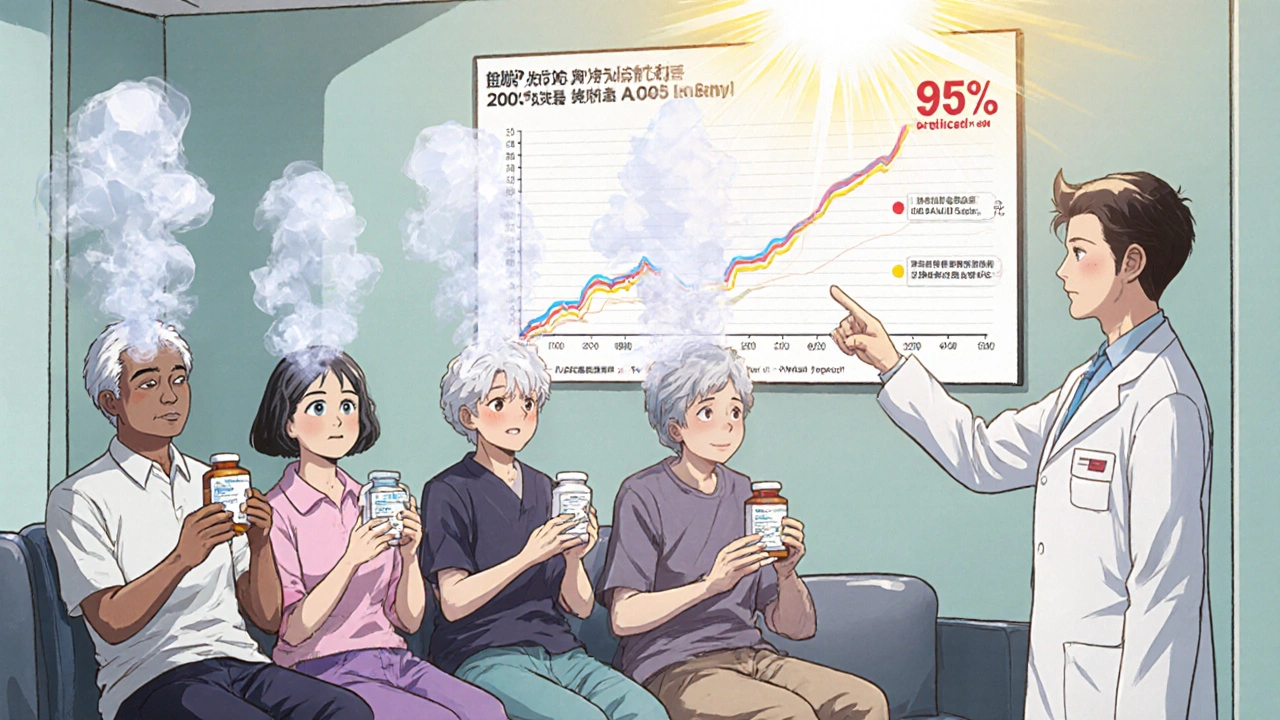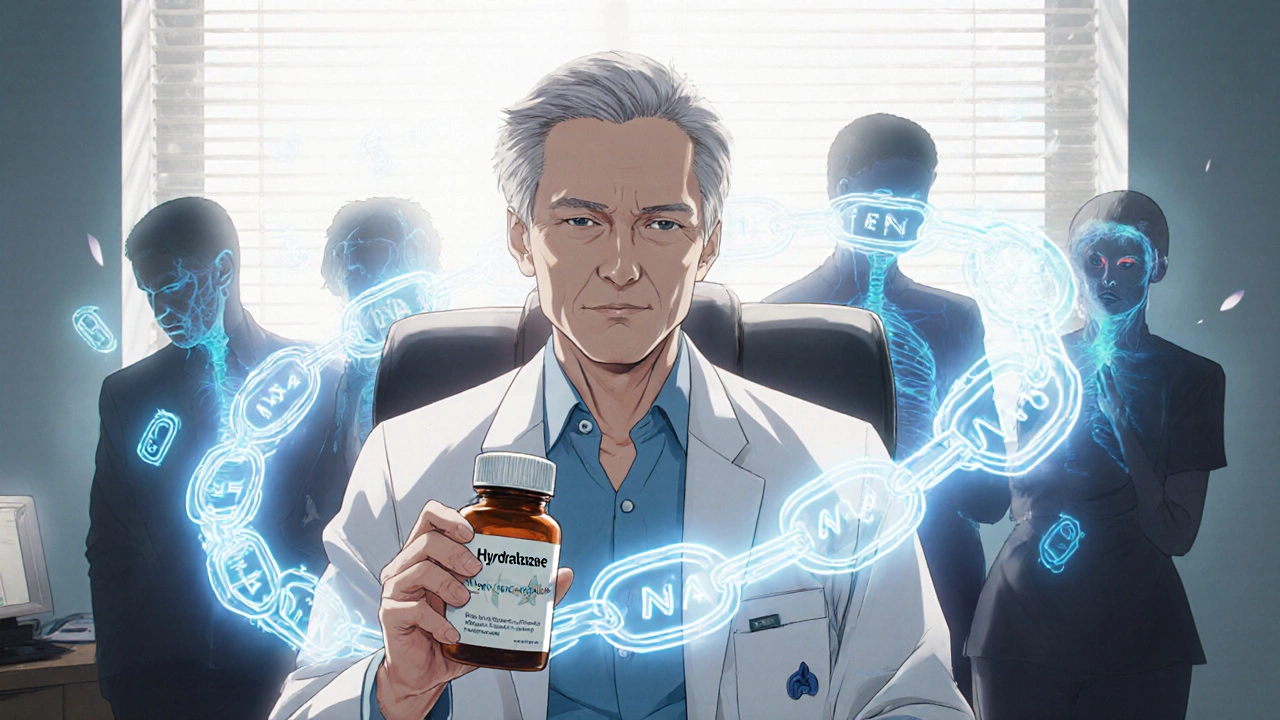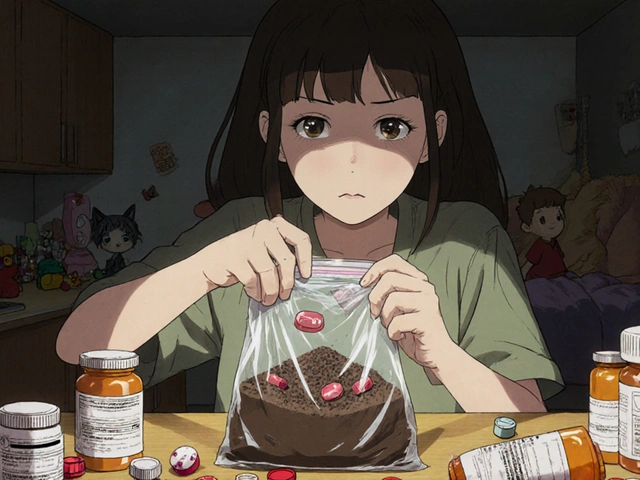Most people assume lupus is a lifelong autoimmune disease you’re born with. But what if it wasn’t you-it was your medicine? Every year, thousands of adults develop lupus-like symptoms not from genetics, but from a drug they’ve been taking for months or years. This isn’t rare. It’s called drug-induced lupus, and it’s one of the most misunderstood conditions in rheumatology.
What Exactly Is Drug-Induced Lupus?
Drug-induced lupus (DIL) is an autoimmune reaction triggered by certain medications. Your immune system, confused by the drug, starts attacking your own tissues-just like in systemic lupus erythematosus (SLE). But here’s the key difference: DIL doesn’t stick around. Once you stop the drug, your body usually resets itself.It was first noticed in the 1950s when patients on hydralazine (a blood pressure drug) started developing joint pain, rashes, and fatigue. Doctors thought it was classic lupus-until they stopped the medication and the symptoms vanished. That’s when they realized: this wasn’t the same disease. It was a side effect.
Today, about 10-15% of all lupus-like diagnoses in the U.S. are drug-induced. The good news? Up to 95% of cases fully reverse after stopping the trigger. That’s not a cure. It’s a reset.
Which Drugs Cause It?
Not every medication can do this. Only a handful have been proven to trigger DIL. The biggest offenders:- Hydralazine (used for high blood pressure): Causes DIL in 5-10% of long-term users
- Procainamide (for irregular heartbeat): Up to 30% risk after years of use
- Minocycline (an antibiotic for acne): 1-3% risk, often mistaken for skin disease
- TNF-alpha inhibitors (like infliximab, adalimumab): Used for rheumatoid arthritis and Crohn’s; now linked to 12-15% of new DIL cases since 2015
- Immune checkpoint inhibitors (like pembrolizumab): Used in cancer treatment; emerging cause, especially in older patients
What’s surprising? These drugs aren’t rare. Millions take hydralazine or minocycline every year. Most never develop DIL-but if you’re over 50, male or female, and on one of these for more than three months, you’re in the risk zone.
What Are the Symptoms?
DIL mimics lupus-but with limits. You won’t get the worst of it. Here’s what you’re likely to feel:- Muscle pain: Affects 75-85% of patients. Feels like constant soreness, even without exercise
- Joint pain and swelling: Common in hands, knees, wrists. Often mistaken for arthritis
- Fever and fatigue: Persistent low-grade fever and exhaustion that doesn’t improve with rest
- Weight loss: Unexplained, not from dieting
- Serositis: Inflammation around the lungs (pleuritis) or heart (pericarditis). Causes sharp chest pain when breathing
Here’s what’s not typical in DIL:
- Butterfly rash across the nose and cheeks (only 10-15% of DIL cases vs. 40-60% in SLE)
- Severe kidney damage (under 5% of DIL cases vs. 30-50% in SLE)
- Neurological issues like seizures or psychosis (less than 3% in DIL vs. 20-30% in SLE)
- Photosensitivity (sun-triggered rashes)-only 20-30% of DIL patients, compared to over half of SLE patients
If your symptoms are mild and mostly involve joints, muscles, and fatigue-and you’re on a high-risk drug-you should suspect DIL before assuming it’s fibromyalgia or chronic fatigue.
How Is It Diagnosed?
There’s no single test. Diagnosis is a puzzle built from three pieces: your meds, your symptoms, and your blood.Step 1: Medication history
Your doctor needs to know every pill you’ve taken in the last 6-24 months. That includes antibiotics, acne meds, heart drugs, and even over-the-counter supplements. Many patients don’t realize their acne treatment or blood pressure pill could be the culprit.
Step 2: Blood tests
- ANA (antinuclear antibody): Positive in over 95% of DIL cases
- Anti-histone antibodies: Found in 75-90% of DIL patients. This is the hallmark. In regular lupus, only 50-70% have them
- Anti-dsDNA antibodies: Almost always negative in DIL. If they’re positive, it’s more likely classic SLE
- ESR and CRP: Elevated in most cases, showing inflammation is active
Here’s what makes DIL stand out: you have a positive ANA and anti-histone antibodies-but no anti-dsDNA. That’s the fingerprint.
Step 3: Rule out other causes
Doctors will check for infections, other autoimmune diseases, and even cancer. DIL is a diagnosis of exclusion. If your symptoms improve after stopping the drug, that’s the final clue.

How Long Does Recovery Take?
The biggest myth about DIL is that it takes years to heal. It doesn’t.After stopping the trigger drug:
- 80% of patients feel significantly better within 4 weeks
- 95% are mostly or fully recovered within 12 weeks
- Most symptoms-joint pain, fatigue, fever-fade steadily, not suddenly
Some people need extra help. If symptoms linger:
- NSAIDs (like ibuprofen): Help 60-70% of mild cases
- Low-dose steroids (5-10 mg prednisone): Used for 4-8 weeks in moderate cases; 85-90% respond well
- Immunosuppressants (azathioprine, methotrexate): Rarely needed, only if symptoms are severe and don’t improve
Important: You don’t need lifelong steroids. That’s a mistake many make when DIL is misdiagnosed as SLE.
What Happens After Stopping the Drug?
Stopping the medication is the treatment. But what about the condition it was treating?If you were on hydralazine for high blood pressure, your doctor will switch you to another drug-like losartan or amlodipine-that doesn’t carry DIL risk. If you were on minocycline for acne, doxycycline is a safer alternative. For heart rhythm issues, procainamide can be replaced with amiodarone, which has a DIL risk under 0.3%.
Patients who switch medications often report symptom relief within 3 weeks. One Reddit user stopped minocycline and saw joint swelling vanish in 21 days. Another stopped hydralazine and was 80% better in four weeks.
Why Is It Often Misdiagnosed?
Because the symptoms look like lupus-or fibromyalgia-or chronic fatigue.A 2022 patient survey found the average time to correct diagnosis was 4.7 months. During that time, patients were often prescribed steroids, immunosuppressants, or pain meds that didn’t fix the root cause. One in four DIL cases are initially labeled as SLE.
Why? Many doctors don’t think to ask about medications. They see a positive ANA and assume lupus. But if you’re a 62-year-old man on hydralazine for 18 months, and you have joint pain and fatigue-but no kidney or brain involvement-that’s not lupus. That’s DIL.

Who’s at Higher Risk?
It’s not random. Genetics play a role.People with a specific gene variant-HLA-DR4-are 3.2 times more likely to develop DIL.
Even more telling: slow acetylators. This is a genetic trait that affects how your body breaks down certain drugs. If you’re a slow acetylator and take hydralazine, your risk jumps 4.7 times higher. That’s why some European guidelines now recommend genetic testing before prescribing hydralazine to older adults.
Age matters too. 70-80% of DIL cases occur in people over 50. It’s rare under 30.
What’s Changing in Medicine?
DIL isn’t going away. In fact, it’s growing.As more older adults take multiple medications-and as biologics and cancer immunotherapies become common-DIL cases are rising. TNF inhibitors alone now cause more DIL than hydralazine did in the 1990s.
But awareness is improving. The American College of Rheumatology updated its DIL diagnostic criteria in 2023, making it easier for doctors to spot. Research is now focused on predicting who’s at risk before symptoms start. Blood tests for microRNA patterns and genetic screening could soon prevent DIL before it happens.
For now, the best defense is knowledge. If you’re on a long-term medication and develop unexplained fatigue, joint pain, or chest discomfort-ask your doctor: Could this be drug-induced lupus?
What Should You Do If You Suspect DIL?
Don’t panic. Don’t stop your meds on your own. But do take these steps:- Write down every medication you’ve taken in the last two years-including doses and start dates
- Track your symptoms: When did they start? What makes them better or worse?
- Ask your doctor for ANA and anti-histone antibody tests
- Request a rheumatology consult if symptoms persist
- Never assume it’s just aging, fibromyalgia, or stress
Recovery is possible. And it’s faster than you think.
Can drug-induced lupus turn into regular lupus?
No. Drug-induced lupus (DIL) is a separate condition from systemic lupus erythematosus (SLE). DIL is caused by medication and resolves after stopping the drug. It does not progress into chronic lupus. Once the trigger is removed, the immune system typically returns to normal. There’s no evidence that DIL increases your risk of developing SLE later.
How long after stopping the drug do symptoms improve?
Most people see improvement within 2 to 4 weeks after stopping the medication. About 80% feel significantly better within a month. Full recovery usually takes 8 to 12 weeks. In rare cases where symptoms persist beyond 12 weeks, low-dose steroids may be used temporarily to help manage inflammation while the body resets.
Is drug-induced lupus dangerous?
It’s usually not life-threatening. Unlike systemic lupus, DIL rarely affects major organs like the kidneys or brain. The most common issues are joint pain, fatigue, and inflammation around the heart or lungs. These can be uncomfortable and disruptive, but they’re reversible. The real danger comes from misdiagnosis-being treated for chronic lupus with strong immunosuppressants when you don’t need them.
Can I ever take the drug again if I had DIL?
No. Re-exposure to the drug that caused DIL almost always brings symptoms back-sometimes more severely. Once you’ve had drug-induced lupus from a specific medication, you should avoid it for life. Your doctor will find a safer alternative to treat your original condition.
Are blood tests enough to diagnose DIL?
Blood tests are critical, but not enough on their own. A positive ANA and anti-histone antibodies strongly suggest DIL, but the diagnosis also requires a clear link between the drug and symptom onset. Doctors must rule out other causes like infections or other autoimmune diseases. The final confirmation is symptom improvement after stopping the drug.
Can young people get drug-induced lupus?
It’s very rare. Over 70% of DIL cases occur in people over 50. The immune changes that trigger this reaction are tied to aging and long-term drug exposure. While there are isolated reports in younger adults, especially those on TNF inhibitors or minocycline, it’s uncommon under age 30. If a young person develops lupus-like symptoms, other causes are far more likely.







